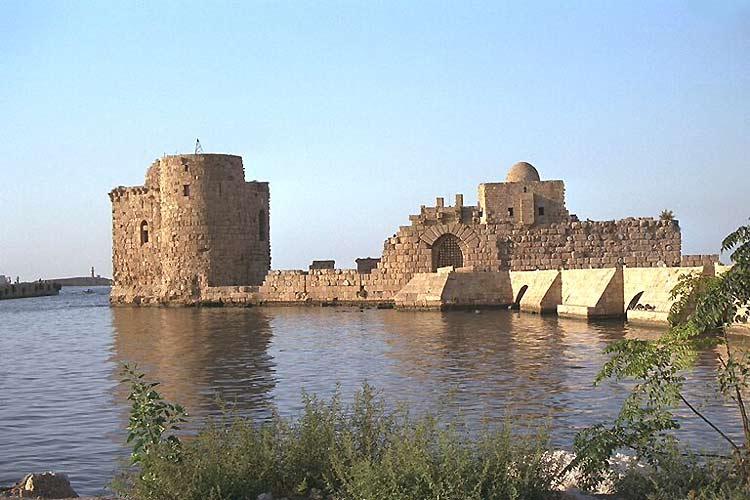12 July. Paul sets sail for Rome
"It was decided that we [Paul and his colleagues, including Luke] would sail for Italy. An officer named Julius, who served in the [Roman] emperor's army, guarded Paul and some other prisoners."
"We got on a ship [at Caesarea] that was from the city of Adramyttium [in Asia Minor] and was about to sail to different ports in the country [Roman province] of Asia. Aristarchus, a man from the city of Thessalonica in Macedonia, went with us."
"The next day we came to Sidon. Julius was very good to Paul and gave him freedom to go and visit his friends, who took care of his needs."
"We left Sidon and sailed close to the [north coast of the] island of Cyprus [to give us some shelter], because the [south westerly] wind was blowing against us. We went across the [Mediterranean] sea by Cilicia and Pamphylia and landed at the city of Myra in Lycia."
"There the officer found a ship from Alexandria [in Egypt] that was going to Italy, so he put us on it."
(Acts 27:1-6)

Paul set out for Rome in the autumn of 59AD with Luke and Aristarchus (a believer from Thessalonica in Macedonia who had been caught up in the riot at Ephesus three years earlier – see Acts 19:29).
They sailed from Caesarea on a ship from the Aegean port of Adramyttium (Edremit) (see the map on 7 July) that was heading home via the ports along the south coast of the Roman province of Asia.
The next day they called at Sidon where the centurion in charge allowed Paul time ashore to visit the believers (see 2 on the map).
Paul was not a 'high-security' prisoner. Technically, he was going to Rome to stand trial before Emperor Nero, but both Governor Festus and his ally King Agrippa had already agreed that he was innocent of the charges brought against him, and their decision would have been carried to the emperor by the centurion in charge of Paul.
So Paul was treated as a special case, and as a Roman citizen he was granted the right to travel with his colleagues, and to visit his Christian friends in Sidon.
From Sidon, they sailed to the north east of Cyprus and along the sheltered coast of Cilicia and Pamphylia where the offshore breezes helped to offset the prevailing westerly winds, before coming ashore at Myra in Lycia (see 3 on the map).
Myra was an important port where grain ships sailing from Alexandria to Rome could replenish their water supplies and purchase fresh fruit and vegetables. The settlement was founded on the acropolis overlooking the harbour of Andriake in the 5th century BC, and became an important centre for sailors who worshipped Poseidon, the god of the sea.
The city became prosperous by exporting incense to the temples of Egypt. In Paul’s day, the hot sulphur springs at Andriake were famous for their medicinal cures.
At Myra, they boarded a grain ship sailing from Alexandria in Egypt to Italy. In a world constantly under the threat of famine (see Acts 11:27-30), abundant grain supplies were a key promise that enabled Roman emperors to maintain their popularity amongst the citizens of Rome, and the Nile Valley in Egypt was Rome's main supplier of grain. So there was no shortage of Roman ships plying the route from Egypt to Italy during the summer sailing season.
But, as we'll discover tomorrow, the sailing season was nearly over, and autumn gales were about to hit the Eastern Mediterranean.
The photo shows the old port at Sidon (by Grandjean).
You can read more about Myra and the legends surrounding St Nicholas ('Santa Claus'), the 4th century Bishop of Myra @ https://www.thebiblejourney.org/…/1…/paul-sets-sail-for-rome.
